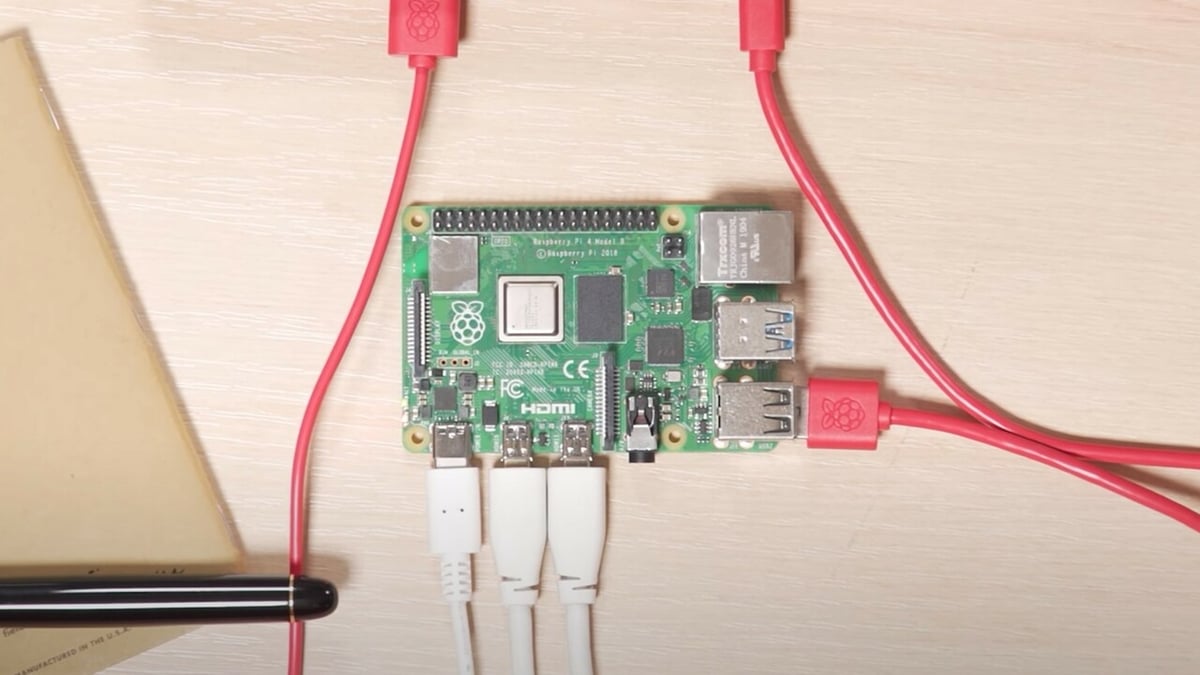The Raspberry Pi company has been inspiring makers since 2012 with their innovative line of single-board computers (SBCs). Since then, the company has grown into a powerhouse within the open-source community and the industrial sector as well. Their boards can be found in the STEM classroom, on the farm for tools and robotics, and possibly in local stores as the server for wireless video security systems.
The SBCs’ relatively low cost (chip shortage notwithstanding) and easy implementation has been such a hit with consumers that the company started making different ones to fit more usage categories. This includes some smaller boards for better concealment in existing infrastructure or wearable tech as well as larger boards that actually come inside a keyboard housing, for instance.
In this article, we’ll discuss the similarities and differences between two of their SBCs, specifically the Raspberry Pi 400 and the Raspberry Pi 4B. We’ll offer our thoughts on what makes each unique and which is better suited for your wants and needs. First up is the arguably more unique Raspberry Pi 400.
The Contenders
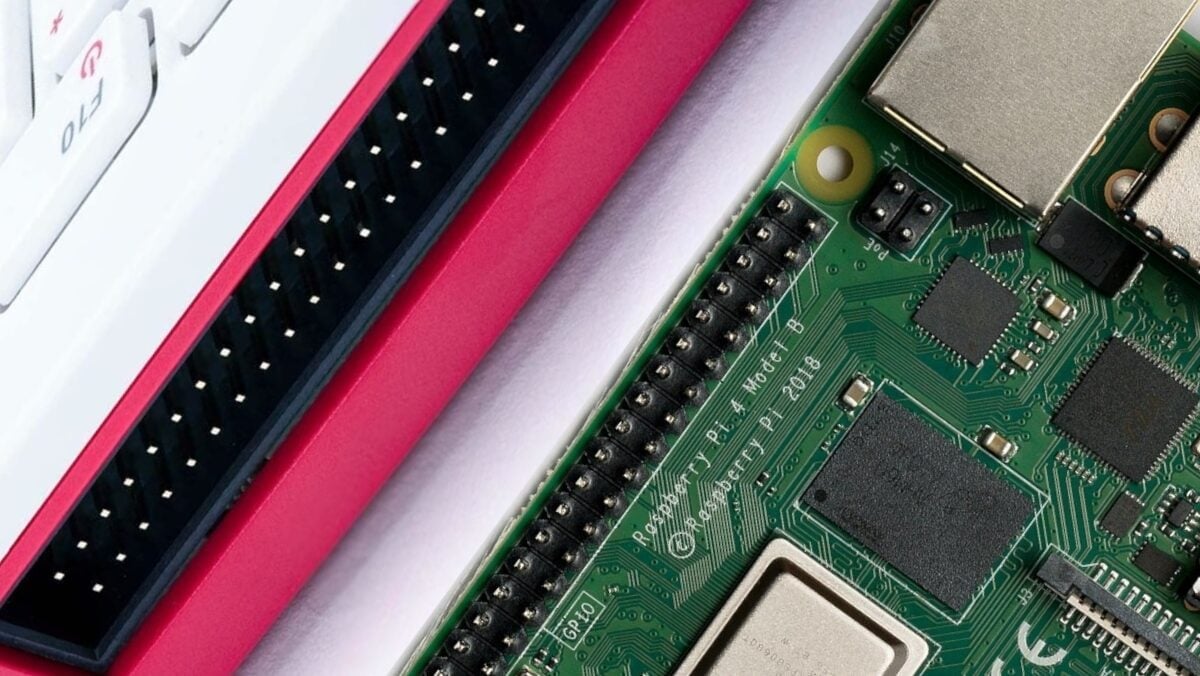
Same company, different number. What else do you need to know about them?
Raspberry Pi 400
The Raspberry Pi 400 is a newer expansion of the existing line of open-source SBCs offered by Raspberry Pi. Users can expect the same quality and basic capabilities that they’ve grown accustomed to in the past but with an attached keyboard that many will welcome. The look is a callback to the legacy computers of old, but well cover that more further below.
While this SBC is perfect for use as a desktop computer, it’s capable of far more than that. Its layout is great for expansion and customization while remaining easy to interact with. One could even create a cyberdeck or retro gaming device as highlighted in our article on Raspberry Pi 400 projects. In short, this SBC is a whole project launch pad that many creators will make great use of.
The Raspberry Pi 400 starts around $70 for the base unit with kits around $100.
Raspberry Pi 4B
The Raspberry Pi 4B is an already popular SBC that’s been in high demand for years. Similar to the Raspberry Pi 400, it builds off the same successes of previous iterations. However, this SBC remains small and accessible while adding more options for RAM, USB 3.0, Bluetooth 5.0, and wireless connectivity. Most makers are pressed to find something they don’t like about the board other than availability, which is only an issue because of its high demand to begin with.
These boards are perfect for prototyping, computing, or even interfacing between technologies of different ages. For example, a company used a Raspberry Pi 4B to sync with a Siemens PLC in an effort to keep their industrial process going. This capable little SBC will most likely remain a fan favorite for years to come.
The Raspberry Pi 4 starts around $35 for the base unit with kits around $115.
Common Ground
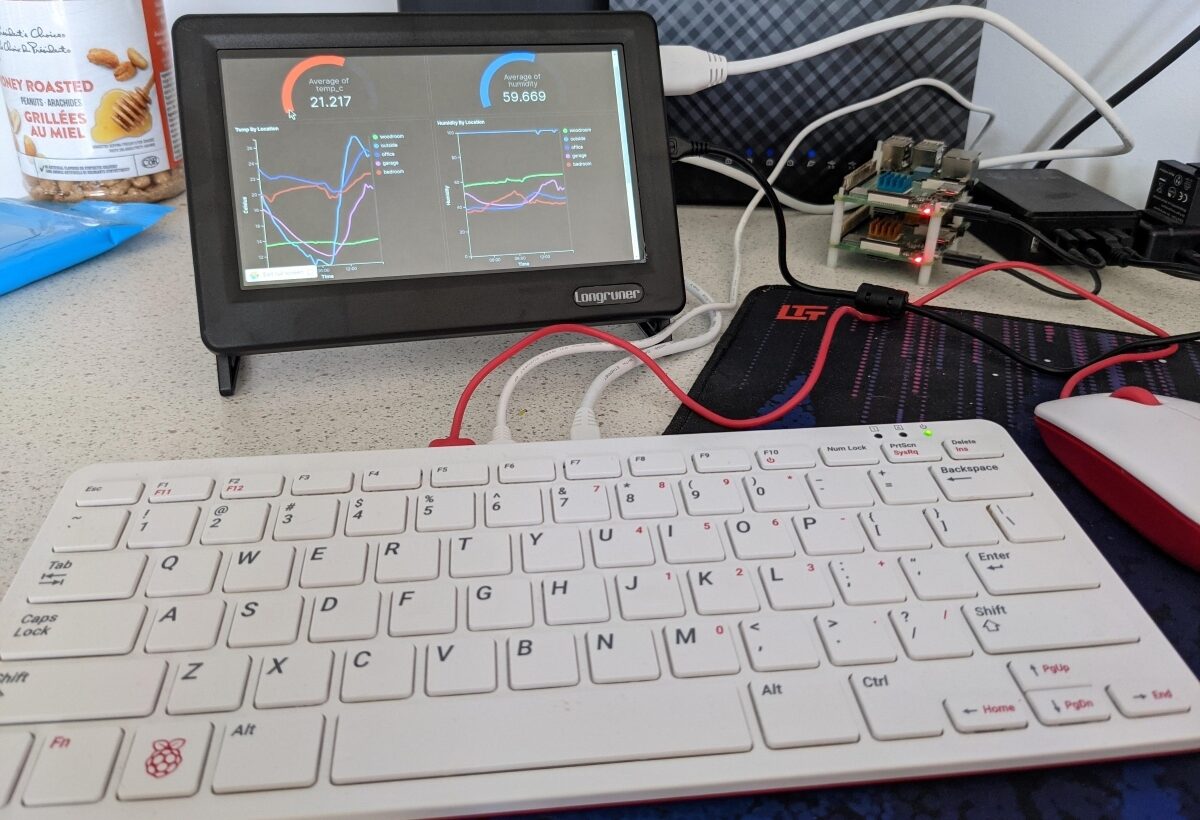
The Raspberry Pi 400 and the Raspberry Pi 4B have more than just similar names. Both of these SBCs are designed and manufactured with the same quality controls and expectations in place that the Raspberry Pi company has been known for.
These tiny titans share the same Gigabit Ethernet ports, 2.4 GHz and 5.0 GHz IEEE 802.11b/g/n/ac wireless, and Bluetooth 5.0 and BLE connectivity abilities. This will continue to allow easy communication between the SBCs with most other devices currently on the market. It also keeps users from having to buy extra breakout boards for features that have become practically expected of SBCs in the 2020s.
The 40-pin GPIO header remains on both devices, though placement has changed on the Raspberry Pi 400 – more on that below. Most HATs currently on the market will still work between both devices despite this change, so some users will see it as an inconvenience at most.
Both boards use the same SD card memory and OS storage, and they’re both capable of using the same OS choices. Their dual Micro-HDMI ports support up to 4kp60 each, and their graphics processing are both performed using OpenGL ES 3.1 and Vulkan 1.0.
Users can find hundreds of videos from creators all around the world to learn about or better utilize either device. Many videos will help you with both at the same time, as the 400 and 4B have so much in common.
Differences
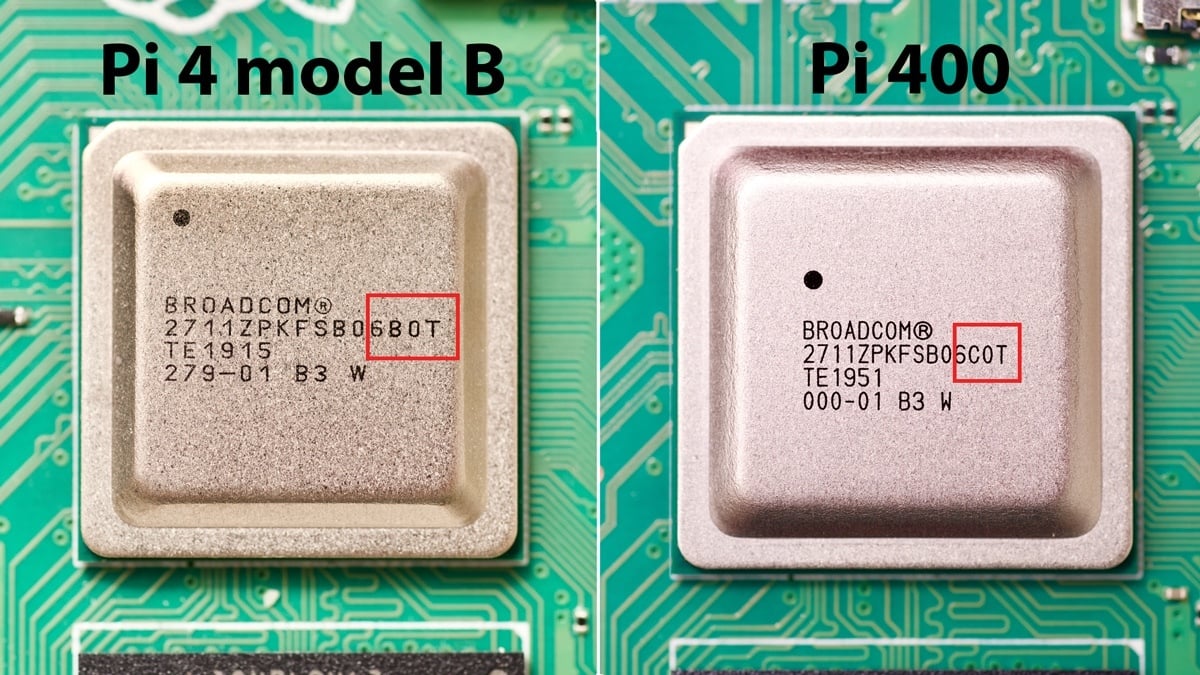
While both these SBCs have commonalities, knowing the differences between them will help users pick the right tool for their application.
Form Factor
Size and shape really have to be addressed first if you’re looking into purchasing either of these boards for a specific end goal. The Raspberry Pi 4B is a 56.5 x 85.6 x 11 mm PCB. It’ll likely need a case and other components to be used. This can be a feature though, as it can be hidden fairly easily inside many different existing electronics or projects. It can even be used in wearables.
The Raspberry Pi 400 on the other hand, is a 286 x 122 x 23 mm keyboard with a computer hidden inside it. This may seem nostalgic for those familiar with the old Commodore 64 computers but a little strange for younger generations. It’s meant to be more ergonomic and user-friendly, requiring fewer parts to be assembled or purchased to be able to use. Try thinking of it like a desktop computer that just needs a monitor, mouse, and power source. Depending on your project needs, this feature may be more of a hassle than blessing, though.
Performance
Both of these SBCs share the same basic operating system options, but there are some subtle differences in their performance that need to be addressed. First, the Raspberry Pi 4B has four different options for available RAM: 1 GB, 2 GB, 4 GB, or 8 GB. The Raspberry Pi 400 only has a 4-GB RAM option. This won’t matter much when used as a desktop CPU of course, but for high traffic applications, such as servers, users may be better suited to the 8-GB Raspberry Pi 4.
I/O
Another stand out difference between these two is their I/O options. The Raspberry Pi 400 has neither a 3.5-mm audio and composite jack, nor DSI and CSI connectors. What does that mean for you though?
The 3.5-mm jack exclusion has become fairly common in the industry and may not come as a surprise to many. It basically means you’re not going to be using legacy headphones or speakers without some kind of additional HAT. Users may instead use the onboard Bluetooth to connect with more modern audio devices. The lack of DSI and CSI connectors on the other hand may just be enough to push some users toward the Raspberry Pi 4.
DSI connectors allow users to easily connect touchscreens and lower power LCD displays. Many gamedecks and emulators use these, for example. The CSI connectors allow users access to cameras that are typically cheaper than their USB counterparts. Even the official Raspberry Pi Camera Module 3 uses the CSI connector, so its exclusion on the 400 may seem like an odd call. It’s a hurdle that’s easy enough to overcome, though; just like with the 3.5-mm jack issue, you can simply add a HAT – yet it does add to the cost. So, if you’re looking for the cheapest entry cost in your prototyping or already know you need access to either of those features, keep that in mind.
The 3.5-mm jack as well as the DSI and CSI connectors are present on the Raspberry Pi 4B, and they’ll allow users to connect to and interact with more types of displays and inputs than that of the Raspberry Pi 400 natively. It’s not that one is more capable than the other, but rather, one is designed with a different end use in mind. As we mentioned above, though, the 400 can still be modified to fit other uses with a little added cost and extra ingenuity.
GPIO
If you’re already familiar with the many HATS that easily interface with the existing Raspberry Pi board, you may find the newer Raspberry Pi 400 a little cumbersome. Rather than facing up for easy access, the keyboard housing now places the GPIO header at the back of the device which is problematic for certain HATs and may require purchasing a ribbon cable to allow connection without having to modify its housing. This is a minor thing for most people but worth mentioning if you already purchased a specific HAT and are looking at which board to use with it. Also, if you plan to power your SBC though the GPIO pins, you need to keep reading.
Power Options
Powering your device is obviously of the utmost importance and is a key area where these two boards differ. The Raspberry Pi 400 doesn’t support the PoE/PoE+ HAT nor can it be powered via the GPIO header as the Raspberry Pi 4B can. Please take extra note of this, as it can really make a difference when you’re using certain HATs.
End Use
The Raspberry Pi 400 is designed to be more desktop-friendly in that it’s basically plug and play, requiring fewer parts to be purchased before users can start enjoying their new equipment. This was a complaint among some who wanted to use the Raspberry Pi 4B as a desktop computer, and why so many kits include a keyboard with them.
The Raspberry Pi 4B is designed to be modular and can be used for a wide variety of different projects. While modular has its uses, it tends to require more of the user in that it needs a case and a cooling system, among other parts, which helps explain why the kits actually tend to cost more for the 4B than for the 400.
With the basics out of the way, let’s take a closer look at the technical specs to better compare the two SBCs.
The Specs
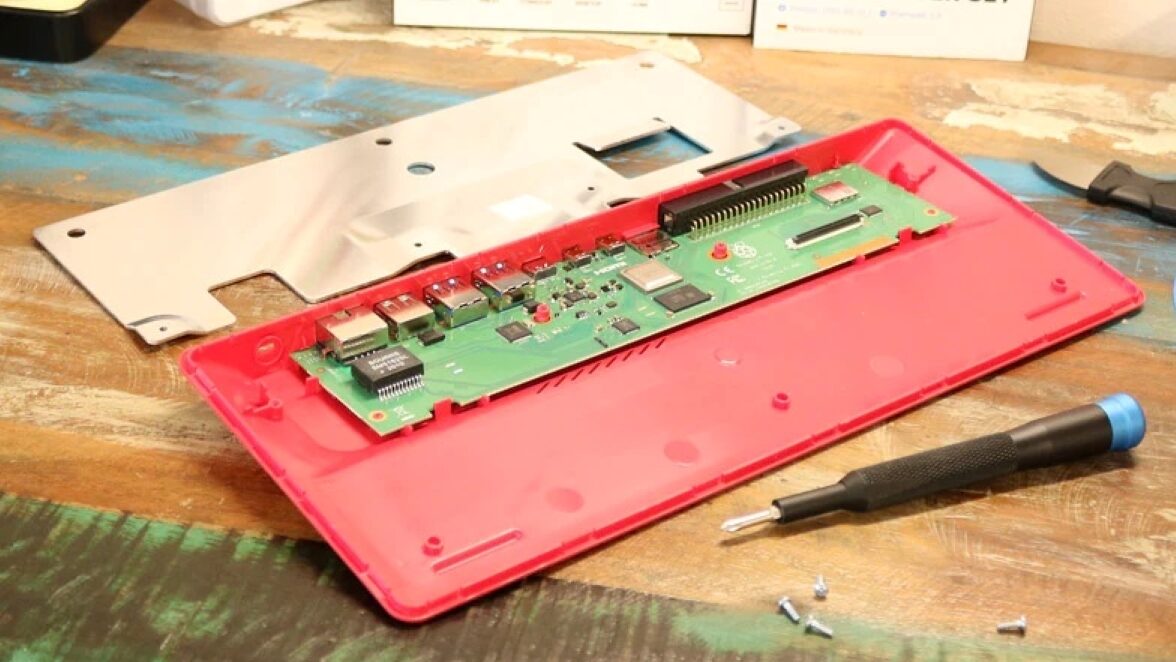
Here’s a side-by-side overview of the most important features of both boards.
The Verdict
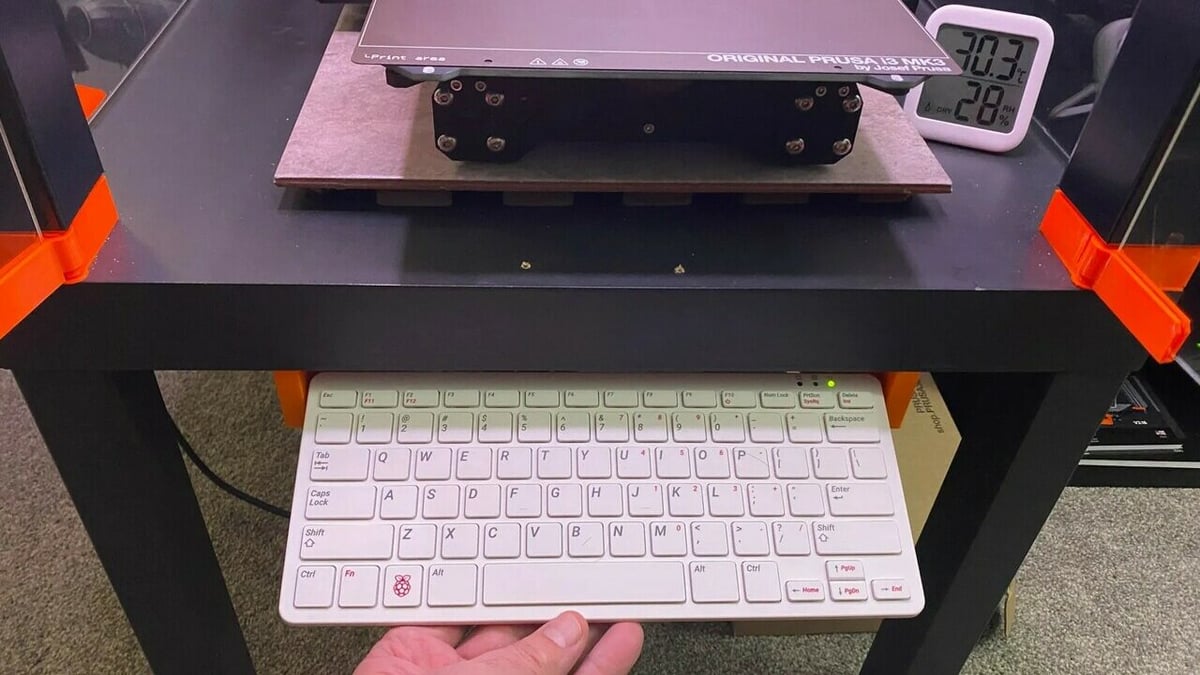
Now that we’ve gone over the basic similarities and differences, let’s recap and try to make some judgement calls. We’ve determined that these two SBCs are very similar with the major differences being their form factor and the additional components needed to utilize them.
So which board is right for your project or desktop? Well, the biggest factor to consider when choosing between these two SBCs is what you want out of it. If you want a desktop computer, the Raspberry Pi 400 is hands down the simplest, quickest, and cheapest option. However, if you’re more interested in modular robotic systems, prototyping, or modifying existing equipment that may be limited on space, the Raspberry Pi 4B is recommended due to its size and existing line of expandable options.
Whichever device you choose, it’s hard to really go wrong, outside of powering options or size constraints. Both the Raspberry Pi 400 and Raspberry Pi 4B are incredibly capable boards that are each made with specific end use goals in mind and therefore will provide the best experience when purchased with those objectives in mind.
License: The text of "Raspberry Pi 400 vs Raspberry Pi 4: The Differences" by All3DP is licensed under a Creative Commons Attribution 4.0 International License.
CERTAIN CONTENT THAT APPEARS ON THIS SITE COMES FROM AMAZON. THIS CONTENT IS PROVIDED ‘AS IS’ AND IS SUBJECT TO CHANGE OR REMOVAL AT ANY TIME.



